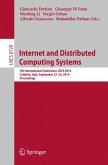The Semantic Web is a vision that has sparked a wide-ranging enthusiasm for a new generation of the Web. The Semantic Web is happening. The central idea of that vision is to make the Web more understandable to computer programs so that people can make more use of this gigantic asset. The use of metadata (data about data) can clearly indicate the meaning of data on the Web so as to provide computers enough information to handle such data. On the future Web, many additional layers will be required if we want computer programs to handle the semantics (the meaning of data) properly without human - tervention. Such layers should deal with the hierarchical relationships between me- ings, their similarities and differences, logical rules for making new inferences from the existing data and metadata, and so on. Dozens of new technologies have emerged recently to implement these ideas. XML (eXtensible Markup Language) forms the foundation of the future Web, RDF (Resource Description Framework), OWL (Web Ontology Language) and many other technologies help to erect a "multistory" bui- ing of the Semantic Web layer by layer by adding new features and new types of metadata. According to Tim Berners-Lee, the inventor of the current Web and the Semantic Web, it may take up to ten years to complete the building. The new Web will be much more complex than the current one and will contain enormous amounts of metadata as well as data.
From the reviews of the second edition: "Extensible Markup Language (XML) is the basis of the semantic Web's metadata. ... The production quality of the book is quite high, featuring high-gloss paper and containing numerous intriguing color screen shots of visualization outputs ... . the book does a good job of providing an understanding of the semantic web, presenting its vision and an overview of research into its visualization." (A. E. Salwin, Computing Reviews, December, 2006)








